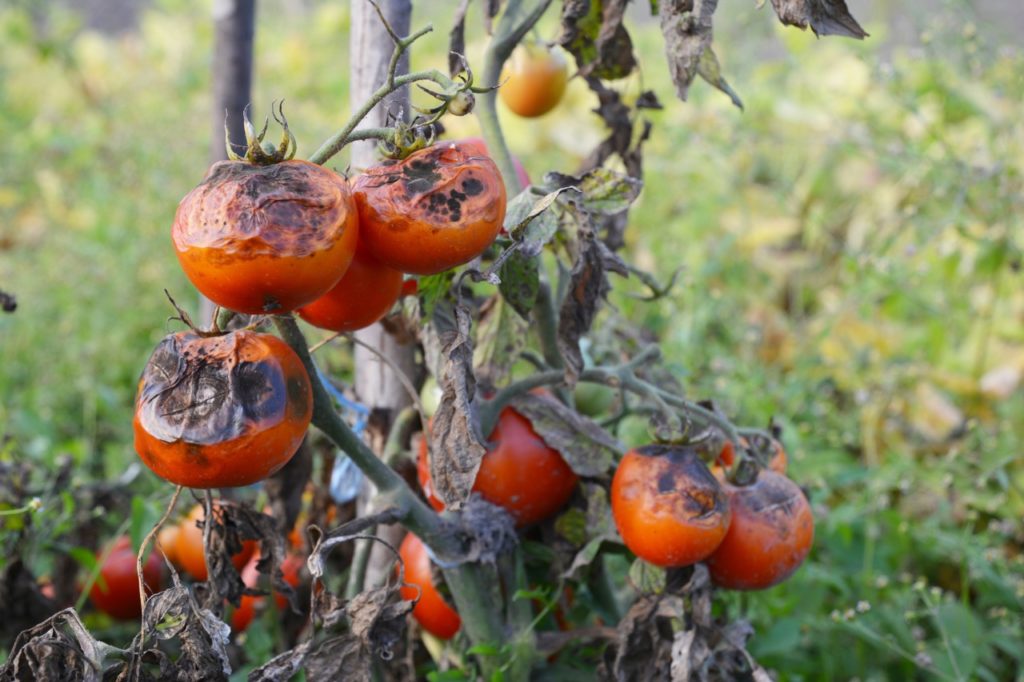Why Tomatoes Aren’t Worth Overwintering: Here’s What To Do At The End Of Season


Elizabeth is a Permaculture Garden Designer, Sustainability Consultant and Professional Writer, working as an advocate for positive change. She graduated from the University of St. Andrews with an MA in English and Philosophy and obtained a Diploma in Applied Permaculture Design from the Permaculture Association.
Reviewed By DAN ORI

Dan has over 27 years’ under his belt caring for plants and gardens. Working as a Horticultural Instructor and Consultant, he draws on a diverse range of experience that includes working as a Head Gardener, Tree Surgeon, Garden Centre Trouble Shooter, and writer of academic papers. Dan has a Level 3 Diploma in Horticulture and is currently a candidate for the RHS’s most prestigious award – The Master of Horticulture.
IN THIS GUIDE
TOMATO GUIDES
Disposal
Feeding
Growing From Seed
Growing In Hanging Baskets
Harvesting
Problems
– Not Setting Fruit
Pruning
Yellow / Orange Varieties
– Roma
– Sungold
– Alicante
– Moneymaker
– Gardeners Delight
Tomato plants will only remain productive for so long in a British garden, and at the end of the growing season, the plants will usually begin to die back.
Though these are perennial plants in warmer climes, when growing outdoors or in a polytunnel or greenhouse in the UK, they are typically treated as annual plants.
Many new gardeners wonder what to do with old tomato plants once they have finished harvesting their fruit.
Overwintering Old Plants
If your tomato plants are still in peak health, green and lush looking, then there is the possibility that you might be able to overwinter those plants in a greenhouse or in a light, bright spot inside your home.
To do so, you will need to either take your tomato plants and place them in a frost-free and bright location that remains above 5°C.

Care for the plant over winter by keeping the medium moist.
Tomatoes will not fruit over the winter, but the plants will be sturdy and get off to a good head start in spring if cared for correctly.
You can either use overwintered plants for cuttings or grow them to produce fruit once more the following year, though the former is generally more effective.
“I would not recommend trying to overwinter tomatoes, as seeds germinate quickly and easily,” explains Horticultural Consultant Dan Ori.
“The longer you keep tomato plants in colder and wetter conditions, the more likely you will be to have blight and mould issues that you carry into the next growing year.”
Can You Compost Old Tomato Plants?
There is one big question when it comes to dealing with old tomato plants that you are not overwintering – to compost or not to compost.
The answer to this question depends on two things:
- The health of your old tomato plant.
- The composting method you use.
If your plant has any signs of pest infestation or disease, then it is not a good idea to add it to your general composting system.

Tomato plants can often succumb to a range of fungal and bacterial diseases, so composting your plants can often spread those fungal or bacterial diseases around other parts of your garden and transmit them to other plants.
If your plant is healthy and shows no signs of disease, then you can consider adding it to your composting system.
However, whether or not it is a good idea to do so will also depend on which type of composting you do.
If you have a typical cold composting heap or bin, one thing to note is that thick stems on a tomato plant can take a long time to break down.

Another thing to remember is that seeds can remain viable in the finished compost which can lead to small tomato plants popping up all over the place.
So, if you do decide to compost in a typical cold composting home composting system, make sure you chop up the stalks well before adding them and avoid placing any fruits with seeds into the heap.
If you have a proper hot composting system, where temperatures get much higher within the compost, then you can compost old plants – seeds and all.
How To Dispose Of Diseased Plants
The most ecologically sound and sensible way to dispose of plants that have signs of fungal or bacterial infection is to avoid adding them to your general waste bin.
Instead, you should dig a deep hole in a corner of your garden and bury your old plant materials, where they can break down below the soil and return their nutrients to the soil.

As long as this trench or hole is not where you want to grow your vegetables in the future, diseases will not typically be an issue.
Plant comfrey or another plant nearby that is good at gathering nutrients from the soil and you can chop and drop its leaves as mulch, taking advantage of the nutrients the old tomato plant contains.
